Day Tripping From Playa del Carmen: An Ultimate Mayan Encounter
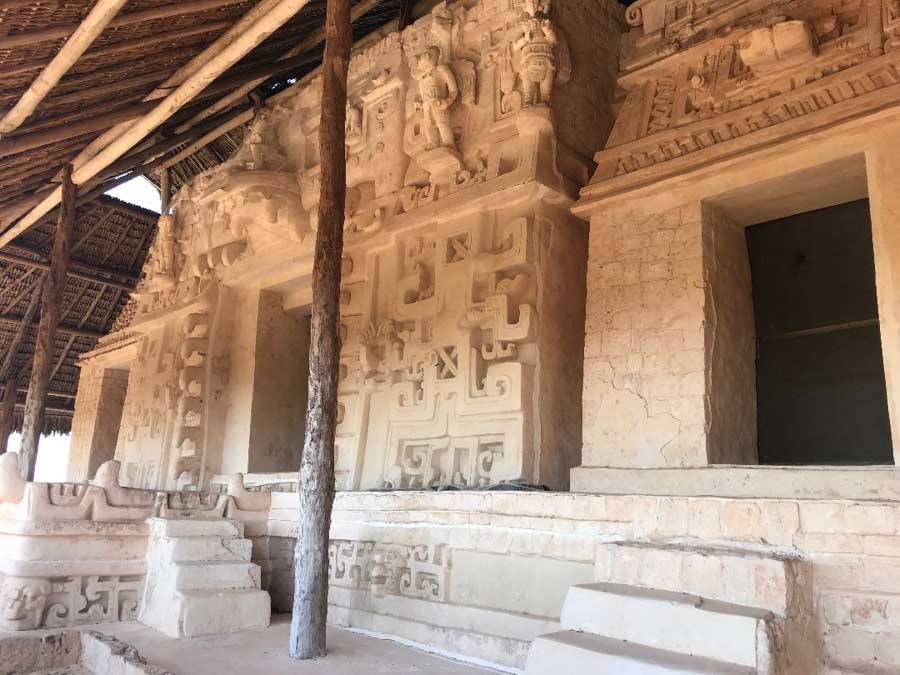
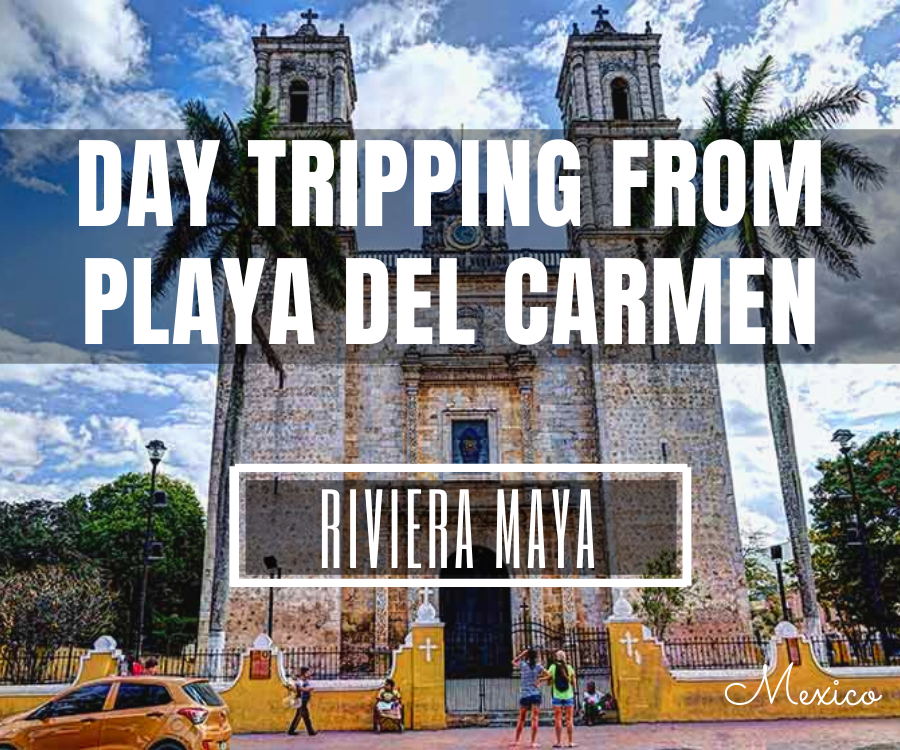
Updated August 25, 2025
There are infinite reasons for developing an infatuation with the Rivera Maya. You don’t have to travel far to come face to face with phenomenal natural beauty. Take Playa del Carmen for example, which sits in the heart of the 75-mile stretch of Mexican Caribbean coastline. In the backyard of this little paradise alone is an abundance of memorable things to see and do.
In fact, if you were to cross one thing off the bucket list every week, the site-seeing schedule would fill your weekends for a decade. Not to mention that each year, new attractions, adventure parks, or secluded beaches are added to the catalog. The more you discover, the more you realize the pure and undeniable magnificence of the Yucatan Peninsula and its people.
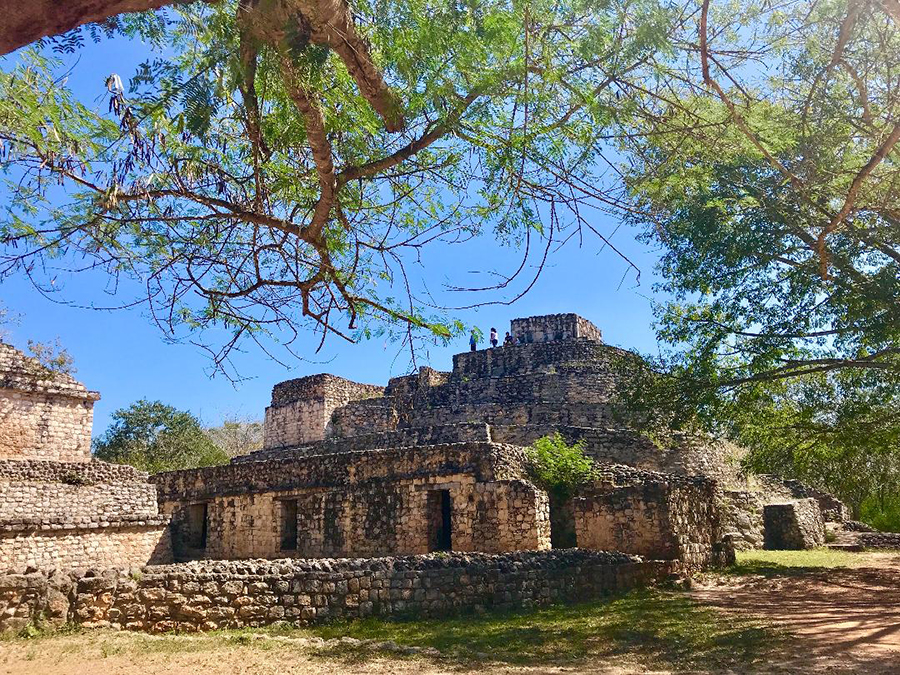
Adventure and Ancient Cities: The Ultimate Playa del Carmen Day Trip
Whether traveling with friends, family, or as a twosome, this culturally-immersive, full-day trip is for you. The journey begins at Playa del Carmen, continues to the ancient Mayan city of Ek’ Balam, then through Hubiku Cenote Park, with a final stop at the colonial town of Valladolid. You’ll climb the 106 steps of the Acropolis temple, swim in a majestic cenote cavern, explore cathedrals, and sample traditional Mexican fare.
Tip: The adventure lasts from eight to ten hours, which may be long for young children. The hiking portion might not be suitable for parents traveling with infants. As for the rest of the day trip, people of all ages will appreciate the historical and cultural aspects of this special Mexican expedition.
Getting There
Aim to set off early. You’ll want to absorb every aspect of the journey without feeling rushed. The best scenario is to rent a vehicle if you are temporarily visiting the Mayan Riviera. Hertz on the south end of 10th Avenue in Playa del Carmen or booking on Orbitz.com are two good options.
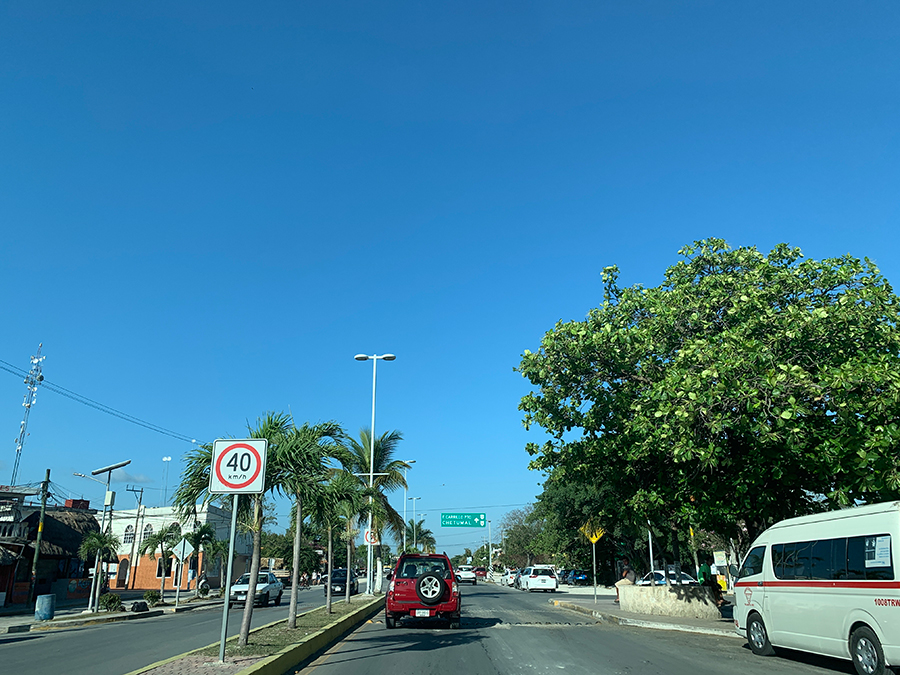
Driving through the Yucatan Peninsula is very safe and enjoyable. By taking the toll highway 305, you can shave 50 minutes off your trip. You’ll forego the authentic route through small villages and their endless string of ‘topes.’ These dreadful speed bumps pop up every 100 meters within a pueblito. Not only will they increase your drive time, but they’ve also been known to scatter vehicle parts across the road if you’re not paying attention!
While a rental car is ideal, there are plenty of reputable private van services that allow you to customize an itinerary. If you have a group of four or more, a private van tour is the way to go. You can split the cost and have a personal chauffeur willing to stop whenever and wherever you like along the route. A flat rate is determined at the time of the booking and usually includes beverages and even snorkel gear.
Stepping Back In Time At Ek’ Balam
Compared to its neighboring Chichen Itza, Tulum, and Coba, Ek’ Balam is the least visited of the Mayan ruins in the area. Unlike at the other archeological sites, you’ll avoid large hoards of tourists. The tranquility enhances the sacred ambiance of the city said to be completed around 800 A.D.
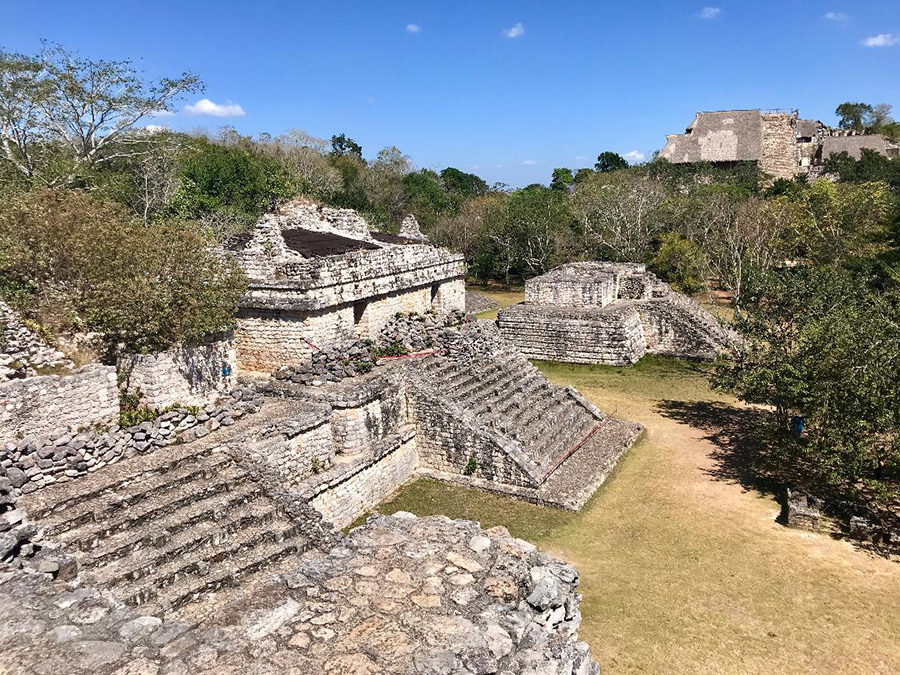
Upon entering, you’ll notice marked native trees, particularly the fascinating duo of good versus evil. Known as the Chechem and Chaka trees, this pair grows side by side in the Central American jungle. The Chechen releases a toxic sap that when in contact with human skin, produces a flaming rash. Remarkably, the bark of the nearby Chaka provides the antidote. Another notable tree, the Baalche, is still used to this day to make the ceremonial (and mildly intoxicating) balche wine.
The first interesting structure on the site is a pointed archway erected next to the remnants of a sac-be (elevated Mayan road.) These ‘white roads’ once connected the Mayan empire and led to the nearby Coba and Chichen Itza.
A City In Ruins
Ek’ Balam was inhabited for approximately 1000 years and may have been occupied as early as 100 B.C. The initial major excavation work only began in 1985 and uncovered, not the highest, but certainly one of the Mayan civilization’s most splendid works – The Acropolis. The notable temple is 160 meters long, 70 meters wide and has a height of 31 meters. Archaeologists discovered 72 rooms within the structure, one containing the tomb of the city’s former ruler Ukit Kan Le’k Tok.
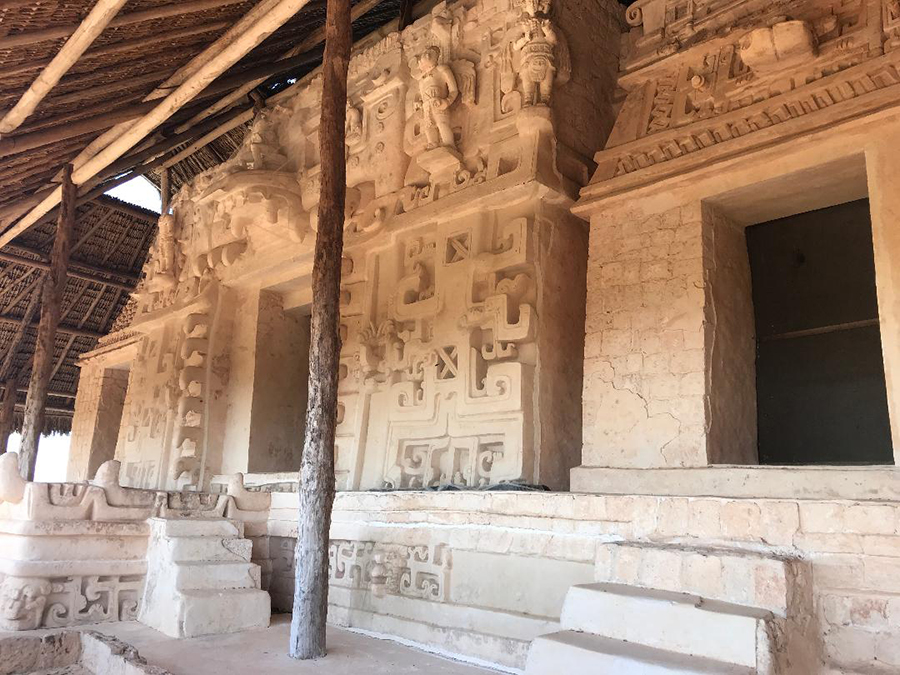
Intricate carvings two-thirds of the way up the dominant temple have revealed what is said to be a monstrous jaguar standing guard at the entrance. In the middle of the site are The Twins. The structures showcase carved pillars, which the Maya erected to commemorate important dates or events. Hieroglyphics on one of the pillars depict Ukit Kan Le’k Tok with his massive headdress.
X’Canche: A Natural Swimming Pool
Although 12 square kilometers of this ancient city have been mapped, only the central ceremonial square (about 1 square mile) can be viewed. A kilometer and a half from the site is the beautiful X’Canche cenote. You can rent a bicycle or get a ride on a tricycle, also referred to as a ‘Mayan limousine.’
A separate fee for X’Canche is charged, but the cool waters are inviting after trekking the grounds of Ek’ Balam. You can enjoy the scenic jungle views and the mystical atmosphere from the suspension bridge above the cenote. If you dare, take an exhilarating swing from the rope or zip line into the natural pool.
What to know:
- Parking is free.
- General admission is $556.00 MXN pesos for adults, $95.00 for children 4-11 and $227.00 for Mexican residents (with ID). The ticket office accepts cash only and is open from 8 am – 4 pm daily.
- Visitors are allowed to climb the structures. Bring good walking shoes as the steps are steep and can be smooth and slippery in some places.
- There is a modest Mayan souvenir area. The people are friendly and not aggressive with their sales pitches. Also on the premises is a convenience store selling snacks and beverages.
- You can find plenty of shade on the grounds under one of the many giant Ceiba trees, or sacred Mayan ‘Trees of Life.’
- Guided tours in English are available for $800-$1300 pesos, but usually, the price is negotiable. Don’t be afraid to ask if there is a valid promotion.
Directions
In a rental car, take Luis Donaldo Colosio exit and head west out of Playa del Carmen. You’ll pass the green superstore Bodega Aurrera. This road turns into 305 Federal Highway. The well-maintained road is lined with thick jungle brush and becomes 2 lanes in each direction not long after you’ve exited Playa. Pay close attention because often you’ll see a tarantula or even a monkey attempting to cross the highway.
Follow the Merida Cuota sign, which veers to the right. At the tollbooth, you’ll need to pay 250 – 270 pesos ($15USD) for a small to mid-size vehicle. From here, take the Tizimin exit to Highway 295. Just before the town of Temozon is an agave field (the spiky plants that tequila is produced from.) On the main road in town, you can grab a delicious empanada or stop at a taco stand for some authentic Mexican grub.
Continue on this principal road. When you arrive on the outskirts of the town, you’ll see Cenote Hubiku on the right. We chose to go on to Ek’ Balam first before it got too hot in the day. It’s about a 5-minute drive further down an unpaved road, just follow the signage. Go straight until the dead end and you’ll reach the Ek’ Balam parking lot.
Hubiku Cenote and Park
Next on the itinerary, Hubiku, a picturesque tropical oasis 5 kilometers before Ek’ Balam. Within this impeccable Mayan village are gardens bursting with vibrant, native blooms. On the vast property, you’ll also discover an almost entirely enclosed cenote, along with a tequila museum, hammocks, beverage station, gift shop, and buffet hall.
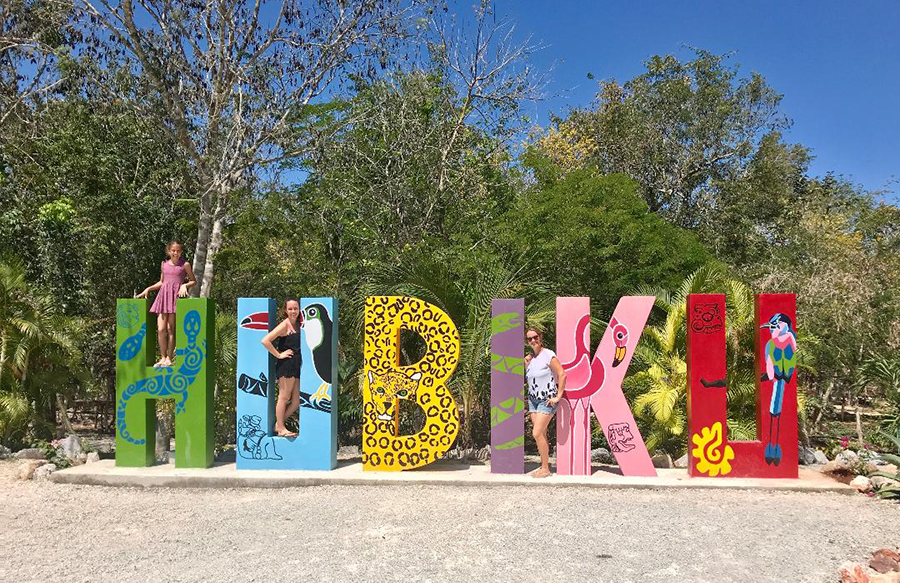
This is not your basic cenote visit. In addition to the exceptionally warm Mayan welcome, the grounds and facilities are in immaculate condition. The $350 peso entrance fee for foreign visitors includes a buffet lunch, a tequila tasting, cenote access, and lifejackets. Children 10 and under receive a 50% discount.
The buffet features a variety of traditional Yucatecan cuisine. You’ll have a chance to sample popular regional dishes such as cochinita pibil and Tres Leche cakes for dessert. Besides the delicious spread, you’re in for a treat. But no spoil alert here, you’ll have to go to see it for yourself.
Afterward, follow the gravel path leading to the tequila factory. A brief tour gives an introduction to the history of tequila and its production process. You’ve possibly tried añejo and reposado, but this is a rare opportunity to sip tequilas infused with peanut, coconut, and coffee flavors.
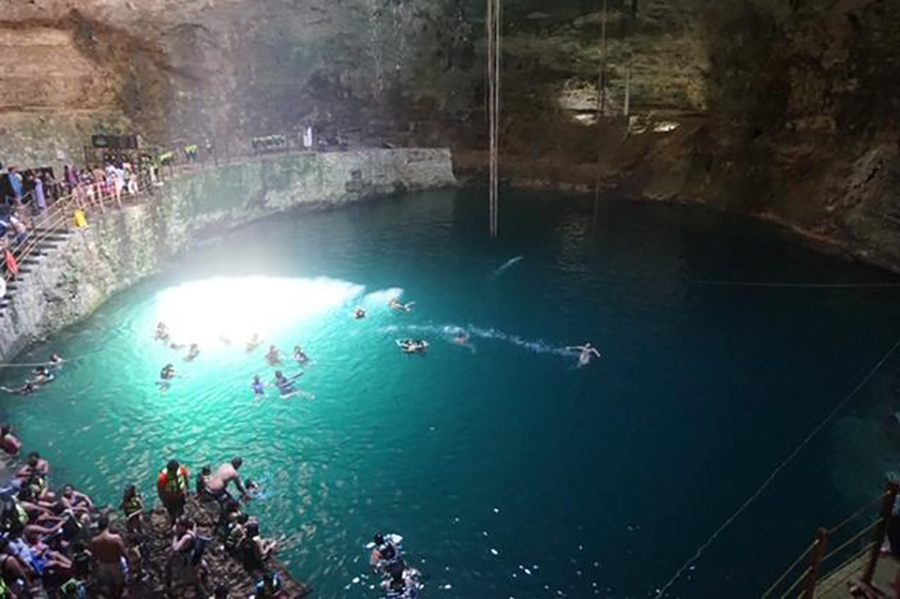
Into The Deep
Last but not least, you’ll proceed to a staircase leading to the underground wonder, Cenote Hubiku. Each step down reveals more splendor. By the time you reach the first platform, the magnitude of this beautiful, natural pool’s beauty will astound you. It’ll leave you in awe, so give yourself a couple of minutes to take it all in. A small opening in the cave’s ceiling allows just enough sunlight through. Not only does the natural light illuminate the breathtaking limestone formations, but it also highlights its clear, emerald-colored, waters.
Lifejackets and lockers are available, but you have to bring a lock. Or you can set your bags in a corner and dive in. Floating in the cool waters of this thousand-year-old cavern will be a high point of the day.
Last Stop: Valladolid
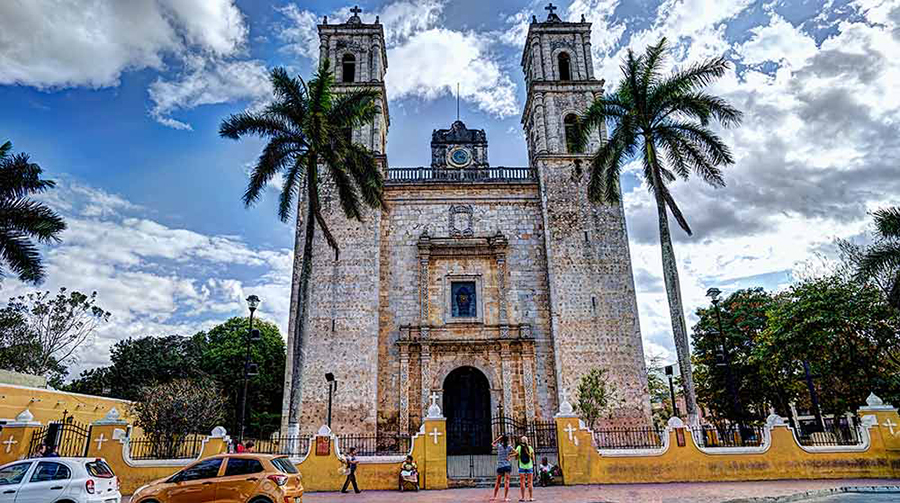
It’s hard to top the fun you’ll have had up to this point, but the magical encounters keep on coming. The grand finale takes place at Valladolid, about 12 kilometers from Temozon. This small colonial city, with its rich history and charming character, received the honor of being one of the country’s 112 Pueblos Magicos, or Magical Towns in 2012.
Valladolid was constructed in 1545 upon the Mayan village of Zaci. It is believed that the revolution that sparked the Caste War first ignited here. A monument just outside the downtown core is dedicated to six local heroes. These brave young men fought to their death to hold off the US Army at the Castle of Chapultepec in Mexico City.
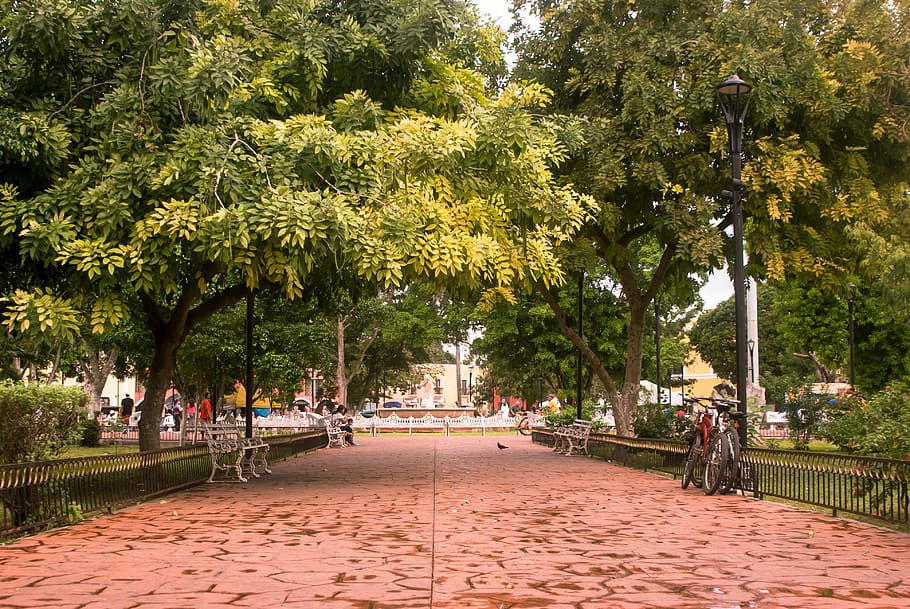
In the center of Valladolid, is a picturesque square with park benches and a fountain at its heart. The bustling Parque Francisco Canton presents the perfect chance to get a taste of the Mexican life. There are vendors selling ice cream and marquesitas (crispy Nutella and cheese crepes typical in the Yucatan.) Residents catch a break from the piercing sun under the shade of the massive trees throughout the scenic plaza. On the streets surrounding the park, are multi-hued hotels, shops as well as the towering Cathedral de San Gervasio.
The City’s Dark Past
In the 19th century, Mayan natives revolted against the Spanish hacienda owners due to the mistreatment of the indigenous people. Mayan landowners along with their families who had taken refuge inside the cathedral were found and massacred inside the cathedral. Innocent bodies were scattered from the entrance to the altar. As a consequence of the horrific bloodshed, it is believed a curse was placed on the church.
Despite grim tales of its past, Valladolid maintains a cheerful and appealing allure. The quaint, walkable city boasts a myriad of charming artisan shops and restored mansions that have been converted into hotels and restaurants. There is also a museum with the largest collection of privately owned Mexican folk art called La Casa de Los Venados.
Before leaving one of Mexico’s most friendly cities, be sure to make a pit-stop at the Convent de San Bernardino. Built in 1560, the mustard-colored building features finely carved altarpieces as well as a row of archways in its frontal façade. In addition to housing the evangelical Franciscan Friars, the convent also once contained the cell that held the famous pirate Lorencillos.
What you should know about the Convent de San Bernardino:
- There’s an entrance fee of $50 pesos
- A free, historical video mapping show takes place each night on the exterior walls. At 9:00 p.m. the audio is in Spanish and at 9:30, it’s in English
- Open daily from 8 am – 7 pm
- The most advanced water wheel of its time sits in the well in the garden at the back of the property
This easy day trip from Playa del Carmen is an experience you and your travel companions will not soon forget. With historical and cultural components along with a hint of adventure, this mini getaway is a must when visiting the Riviera Maya!
